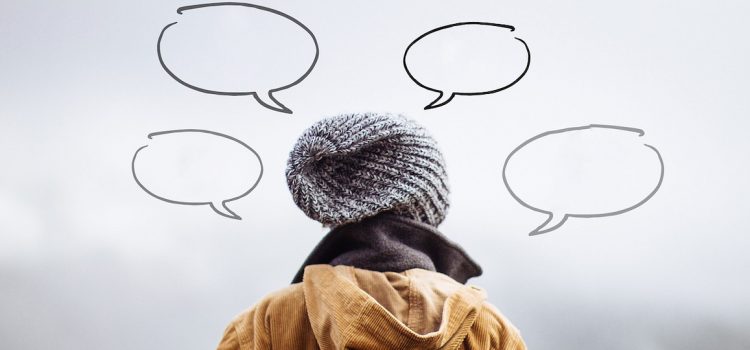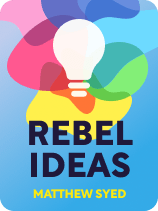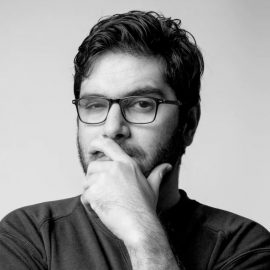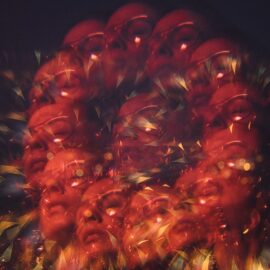

This article is an excerpt from the Shortform book guide to "Rebel Ideas" by Matthew Syed. Shortform has the world's best summaries and analyses of books you should be reading.
Like this article? Sign up for a free trial here.
What is a problem space in diversity science? Why do diverse groups have a better grasp of the problem space?
In Rebel Ideas, author Matthew Syed explains how diverse groups are more collectively intelligent than homogenous ones. His book explains why a problem space is central to diversity and how collective intelligence boosts group performance.
Read on to learn what a problem space is and its connection to diversity science, according to Syed.
The Problem Space & Diversity Science
Many people think of diversity in the context of social justice. But Matthew Syed takes a different approach, exploring how diversity boosts group performance and intelligence. In particular, he argues that we should foster diversity because diverse groups are more collectively intelligent than homogeneous ones. In this article, we’ll discuss the key concepts that underlie Syed’s arguments. In particular, we’ll examine what a problem space is and how cognitively diverse groups have a better grasp of the problem space, and therefore are more collectively intelligent than homogeneous groups.
Defining the Problem Space
So, what is a problem space? According to Syed, the notion of a problem space is central to diversity science. Put simply, the problem space encompasses every idea and perspective relevant to the problem you want to solve.
For example, imagine you wanted to build a computer from scratch. In that case, your problem space would include knowledge of coding, battery science, computer hardware, and so on.
(Shortform note: The term “problem space” is often used in a business context, where experts argue that focusing on the problem space—considering the problem from numerous angles—helps product managers understand their customers’ needs, which then helps them develop more successful products.)
Syed explains that for solving simple problems, an individual can grasp all of the problem space’s ideas. If you need to tie your shoes, for instance, you probably have all the information within that problem space.
However, for more involved problems, no single person can know all the information in the problem space. For example, nobody knows all of the information necessary to construct a rocket ship—such problems require teams with diverse bodies of knowledge.
(Shortform note: Researchers examining how 760 undergraduate students solved complex math problems found that teams of three, four, and five members outperformed even the best individuals. In particular, these teams made fewer mistakes before getting the correct answer, and their solutions were more sophisticated than those of the best individuals. However, the researchers noted no significant difference between teams of three, four, and five members, suggesting that for some tasks, additional members don’t improve problem-solving.)
Consequently, Syed infers that homogeneous groups of intelligent individuals can’t solve complex problems by themselves. After all, such groups don’t span the entire problem space. For instance, a team of genius coders with no other knowledge won’t be able to build an entire computer, since they lack the scope of information needed to build computers.
(Shortform note: Syed’s claim that homogeneous groups can’t solve complex problems is overstated. Other experts argue that cognitively diverse teams solve problems more quickly than homogeneous teams, but they don’t go as far as asserting that homogeneous teams can’t solve such problems at all.)
How Cognitive Diversity Leads to Collective Intelligence
Groups that more fully cover the problem space are more collectively intelligent—in other words, they’re better versed to understand and solve difficult problems. For this reason, Syed argues that cognitive diversity—the range of insights, ideas, and viewpoints represented in a group—is the main factor that determines collective intelligence.
(Shortform note: Syed doesn’t explicitly define “collective intelligence,” though it’s clear he connects it with group problem-solving ability. Other researchers take a slightly broader view of collective intelligence, however, defining it as a group’s ability to complete various cognitive tasks, including brainstorming solutions, negotiating, and moral reasoning.)
Syed concedes that groups of more-intelligent members will be more collectively intelligent, all else being equal. However, if these members all share the same ideas and perspectives, they’ll suffer from knowledge clustering: Their knowledge will overlap substantially, creating a group that’s scarcely more intelligent than any individual member.
(Shortform note: Syed’s concession that groups of more-intelligent members are collectively more intelligent may be too generous; one influential study found no statistically significant correlation between a group’s average individual intelligence and its collective intelligence. These researchers did, however, find correlations between collective intelligence and other factors, including the rate of conversational turn-taking and the proportion of female group members.)
Therefore, Syed concludes that we can’t determine collective intelligence by adding up each member’s knowledge, as that would overvalue homogeneous groups. Rather, he argues that collective intelligence depends on the differences in what group members know. For this reason, groups that are cognitively diverse have greater collective intelligence.
Moreover, Syed argues that we fail to see the benefits of cognitive diversity because we suffer from perspective blindness: We struggle to recognize our own perspective and its blind spots and thus don’t appreciate the importance of other perspectives.
(Shortform note: Perspective blindness also occurs at a societal level, as societies fail to recognize their own blind spots. For example, we’re quick to realize that previous societies permitted moral atrocities, such as slavery and torture. So, it stands to reason that contemporary society likewise has some moral blind spots.)
Exercise: Assess Problem-Solving in Groups
Syed argues that diverse groups are better problem-solvers than homogeneous ones since diverse groups have better coverage of the problem space. In this exercise, reflect on a group that you were part of and consider how that group’s diversity affected your ability to problem-solve.
- Describe a recent situation in which you belonged to a group tasked with solving a problem. What was the problem?
- Which diverse perspectives in the group helped cover the problem space?
- How did those perspectives affect the group’s problem-solving process? Alternatively, if the group lacked diverse perspectives, how did that lack of diversity affect the problem-solving process?
- Which perspectives were missing from the group?
- How might these perspectives have changed the group’s proposed solution to the problem?

———End of Preview———
Like what you just read? Read the rest of the world's best book summary and analysis of Matthew Syed's "Rebel Ideas" at Shortform.
Here's what you'll find in our full Rebel Ideas summary:
- Why diverse groups are more collectively intelligent than homogeneous ones
- Actionable advice for creating cognitively diverse groups
- Why systems shouldn't be designed to fit the "average" person






